Welcome to Creature Feature, a biweekly series from the CELT education team highlighting local wildlife. Each week, we will share a short introduction to a local organism that you might encounter in your backyard or on our trails.
As I sit here writing this week’s creature feature it is still August, late August, but August none the less. But for the last couple weeks the honking of Canada geese, often associated with fall, has been loud and persistent!
Canada geese (or Canadian geese) are a familiar sight here in Maine. The Canada goose has a black head and crown, with a long black neck, and white cheek patches that connect under its chin. The adult male, or gander, tends to be bigger than the goose (female) measuring between 2.5 – 3.5 feet in length with a wingspan of between 4 – 6 feet.

We often see Canada geese in parks, farm fields, and large open lawn spaces, particularly near bodies of fresh water. Canada geese nest in areas that are close to or surrounded by water. The nest is a bowl-shaped depression approximately one and a half feet in diameter lined with grass, leaves, lichens, mosses, and goose down. A nesting pair of geese often return to the same nest site year after year.

Canada geese can lay between two and eight eggs, with four eggs being most common. The eggs are laid in the nest between April and June. The female (goose) does much for the child-rearing, incubating the eggs while the male (gander) stands guard nearby. The female leaves the nest only briefly to feed each day. The eggs hatch after 25-30 days of incubating. The young geese are called goslings and can swim, feed, and walk within 24 hours. The goslings remain in their family group for about one year.

Canada geese are primarily vegetarians and use their long necks to reach down and feed on underwater aquatic plants. When on land they will graze as they walk enjoying a variety of plants like grass, clover, sedge, cattail, plus a variety of crops easily found in Maine farm fields. In Maine, populations of resident Canada geese have significantly increased over the past 25 years, particularly in urban areas where there are smaller predator populations, regulations on hunting, and a dependable year-round supply of food and water.
Canada geese, like many migratory species of birds in Maine, need to travel or migrate to warmer areas as the weather begins to shift towards winter. They do this so they can continue to find the food sources they need as well to stay warm. Many of us have heard the clear honking call of Canada geese when they fly overhead in their V-shaped formation or when they stop to rest in a nearby field. Here in Maine, we have both migrating and non-migrating (or “resident”) geese, meaning some of the population has adapted to the cold winters and doesn’t need to migrate.

A goose must learn to migrate. They are taught by their parents or other adults in their group. Non-migratory geese will never learn this skill, so all their descendants must also be non-migratory residents and stay year-round in the area they were raised.
Canada geese are known for the distinctive V-shaped formation they use to fly. Scientists have found that this formation serves two important purposes. First, it conserves the geese’s energy. Each bird flies slightly above the bird in front of it, resulting in a reduction of wind resistance. The geese take turns being in the front, falling back when they get tired. In this way, the birds can fly for a longer time before they need to stop and rest. Second, the V-formation makes it is easier to keep track of every bird in the group. Scientists also believe that flying in V-formation might assist with the communication and coordination within the group.
Keep eyes and ears open this time of year and you will almost certainly be able to observe these graceful creatures as they fly across the sky.
For more information on Canada geese check out these articles and web sites:
- https://www.allaboutbirds.org/guide/Canada_Goose/id
- https://www.maine.gov/ifw/fish-wildlife/wildlife/living-with-wildlife/avoid-resolve-conflict/geese.html
- https://www.nationalgeographic.com/animals/birds/c/canada-goose/
—BY LISA GENT, CELT EDUCATION COMMITTEE CHAIR
